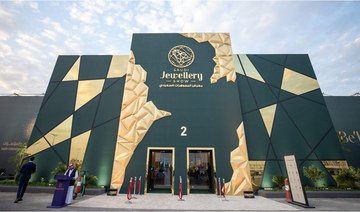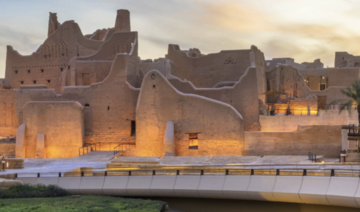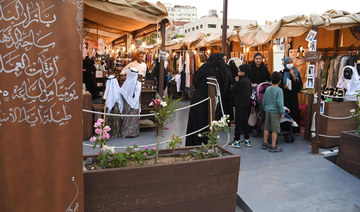WASHINGTON: The heirs of Nazi-era Jewish art dealers have spent nearly a decade trying to persuade German officials to return a collection of medieval relics valued at more than $250 million.
But they didn’t make much headway until they filed a lawsuit in an American court.
The relatives won a round last week when a federal judge ruled that Germany can be sued in the United States over claims the so-called Guelph Treasure was sold under duress in 1935.
It’s the first time a court has required Germany to defend itself in the US against charges of looted Nazi art, and experts say it could encourage other descendants of people who suffered during the Holocaust to pursue claims in court.
The case also is among the first affected by a law passed in Congress last year that makes it easier for heirs of victims of Nazi Germany to sue over confiscated art.
“It open all kinds of other claims based on forced sales in Nazi Germany to jurisdiction in US courts if the facts support it,” said Nicholas O’Donnell, an attorney representing the heirs.
The collection includes gold crosses studded with gems, ornate silverwork and other relics that once belonged to Prussian aristocrats. The heirs of the art dealers — Jed Leiber, Gerald Stiebel, and Alan Philipp — say their relatives were forced to sell the relics in a coerced transaction for a fraction of its market value.
The consortium of dealers from Frankfurt had purchased the collection in 1929 from the Duke of Brunswick. They had managed to sell about half of the pieces to museums and collectors, but the remaining works were sold in 1935 to the state of Prussia, which at the time was governed by Nazi leader Hermann Goering.
Following the sale, Goering presented the works as a gift to Adolf Hitler, according to court documents. The collection has been on display in Berlin since the early 1960s and is considered the largest collection of German church treasure in public hands.
German officials claim the sale was voluntary and say the low price was a product of the Great Depression and the collapse of Germany’s market for art. In 2014, a special German commission set up to review disputed restitution cases concluded it was not a forced sale due to persecution and recommended the collection stay at the Berlin museum.
Two of the dealers fled Germany following the sale of the Guelph Treasure. The other died there, although his children managed to get out.
The heirs decided to sue Germany and the Prussian Cultural Heritage Foundation in US court a year later. Germany tried to dismiss the case under the Foreign Sovereign Immunities Act, which exempts foreign states from being sued in the US It makes an exception for property taken in violation of international law.
US District Judge Colleen Kollar-Kotelly in the District of Columbia said the heirs could argue that the sale was a “part of the genocide of the Jewish people during the Holocaust and, accordingly, violated international law.”
The ruling will encourage other families to pursue stolen art cases in American courts, said Jonathan Petropoulos, a history professor at Claremont McKenna College who specializes in Nazi art restitution.
“The German system for civil litigation presents so many obstacles to claimants,” Petropoulos said. “Victims and heirs deserve their day in court in front of an impartial judge.”
Germany can appeal the ruling. Attorney Jonathan Freiman said German officials are reviewing their options.
“This is a dispute that was already resolved on the merits in Germany, and it doesn’t belong in a US court,” Freiman said.
Thousands of works of art plundered by the Nazis have been returned to their rightful owners or families over the years from Germany and other countries. The Limbach Commission in Germany was formed in 2003 to consider restitution in contested cases where opposing parties can’t reach an agreement. But it has been criticized for moving too slowly.
The German government announced several reforms last year intended to improve the process.
US court ruling could bring more suits over Nazi-looted art
US court ruling could bring more suits over Nazi-looted art
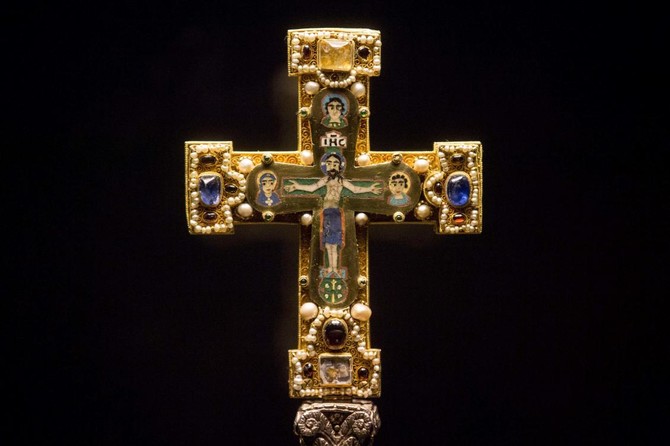
Luxury jewelry brands dazzle at Riyadh showcase
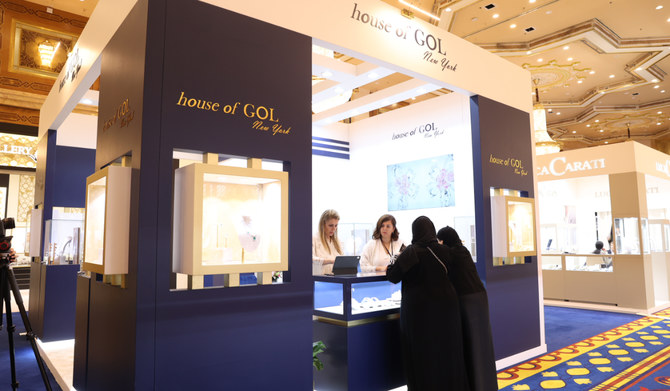
- Larsen said that House of GOL specializes in high-end jewelry and many people buy it to reflect their heritage and to pass it down to future generations
RIYADH: Saudi International Luxury Week, which is taking place in Riyadh until May 9, showcases a selection of fine jewelry from around the world.
The event offers a unique opportunity for Saudi clients to acquire exclusive and sophisticated pieces.

House of GOL, a New York-based brand known for its colorful diamonds, has shown a rare pink diamond at the event.
Anna Larsen, head of business development at House of GOL, has been visiting Saudi Arabia for the past three years to meet clients.
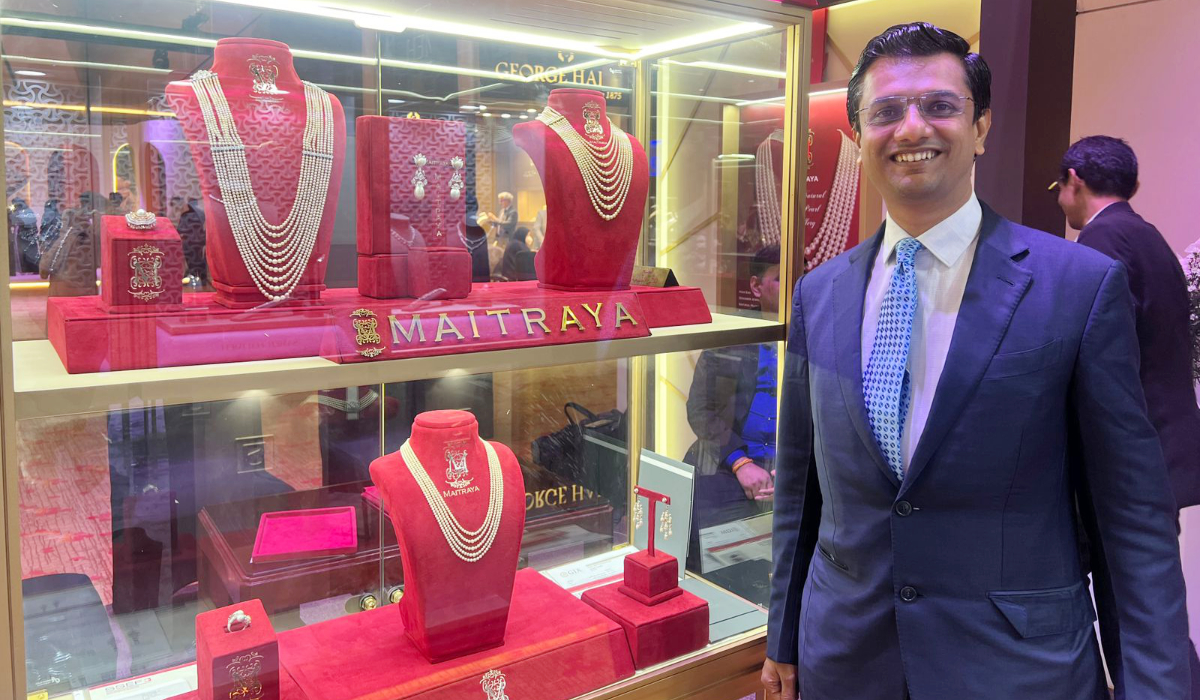
Larsen said that House of GOL specializes in high-end jewelry and many people buy it to reflect their heritage and to pass it down to future generations.
The brand had previously visited the ZAH creative hub in Riyadh and continued its tours across the Kingdom. House of GOL's participation in the luxury week was in collaboration with Clea Nasr, ZAH's head of marketing.
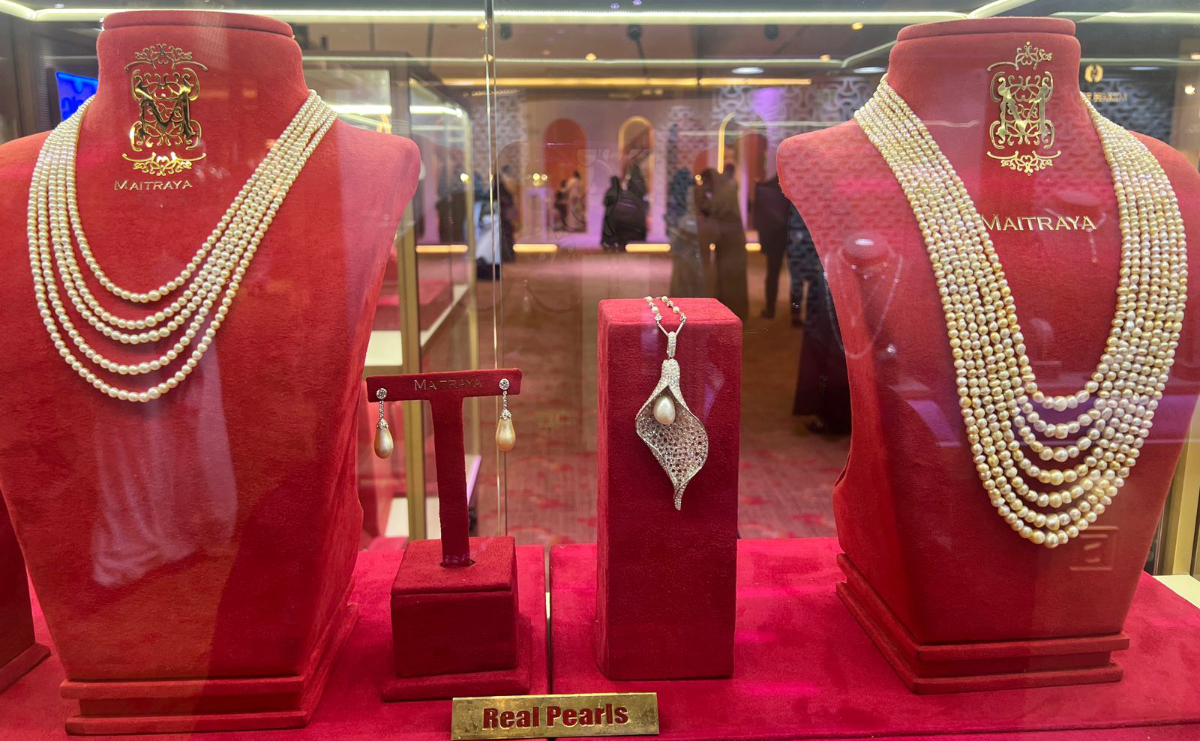
"We're here today with House of GOL to support them at a luxury jewelry event, following our earlier private event at ZAH. We support local and international designers through all PR and marketing activities, creating targeted strategies to drive exposure and growth, especially in Saudi Arabia," Nasr said.
The brand stands out by involving its clients in the jewelry creation process, hand drawing and painting the designs and then allowing clients to keep the drawings, adding a personal touch to the design experience.
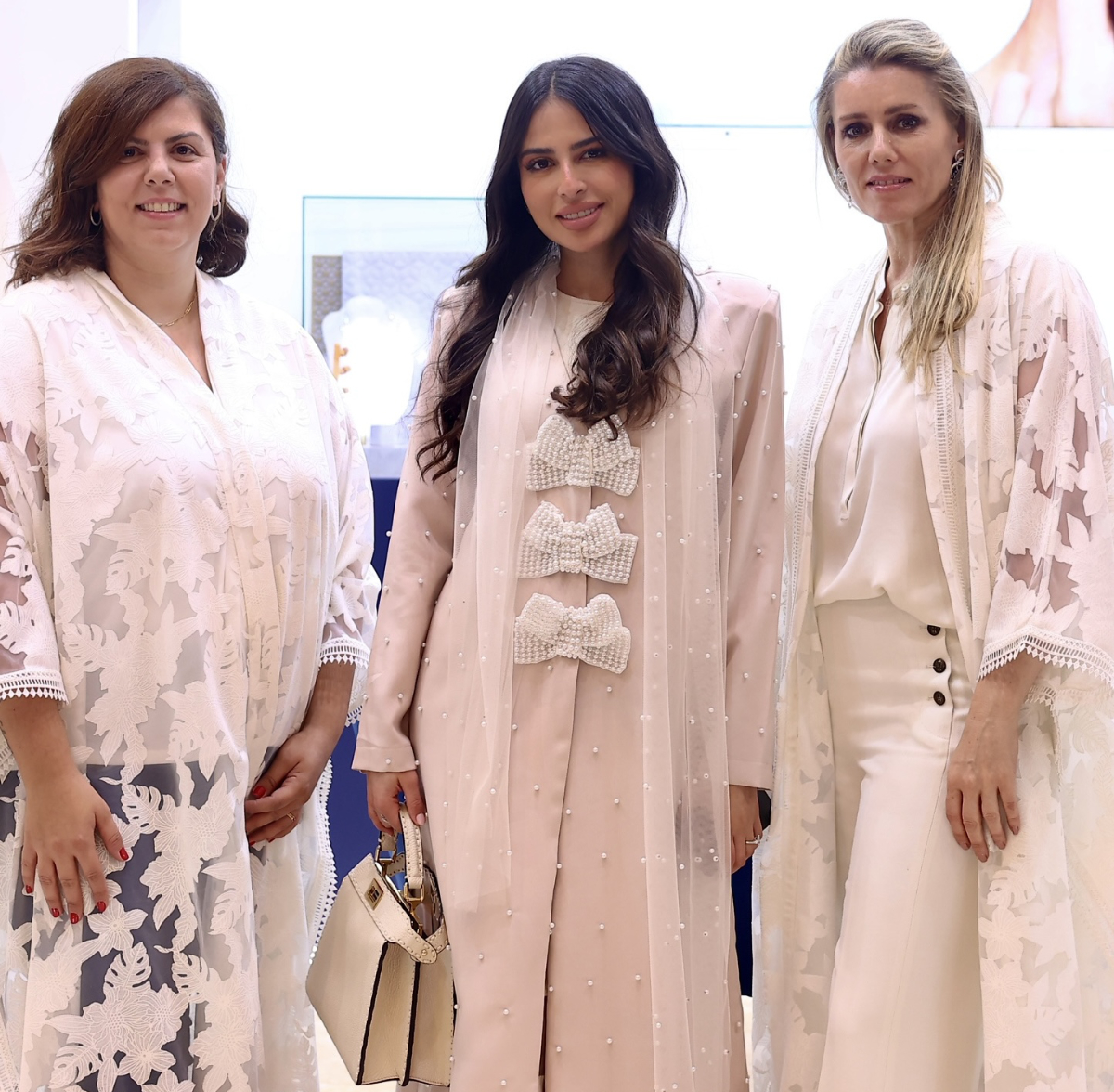
Another standout brand at the event is Maitraya, an Indian company specializing in pure Gulf pearls, including khaleeji and Saudi pearls.
The brand is led by Sanghvi Maitarya, a seventh-generation representative of his family’s pearl business.
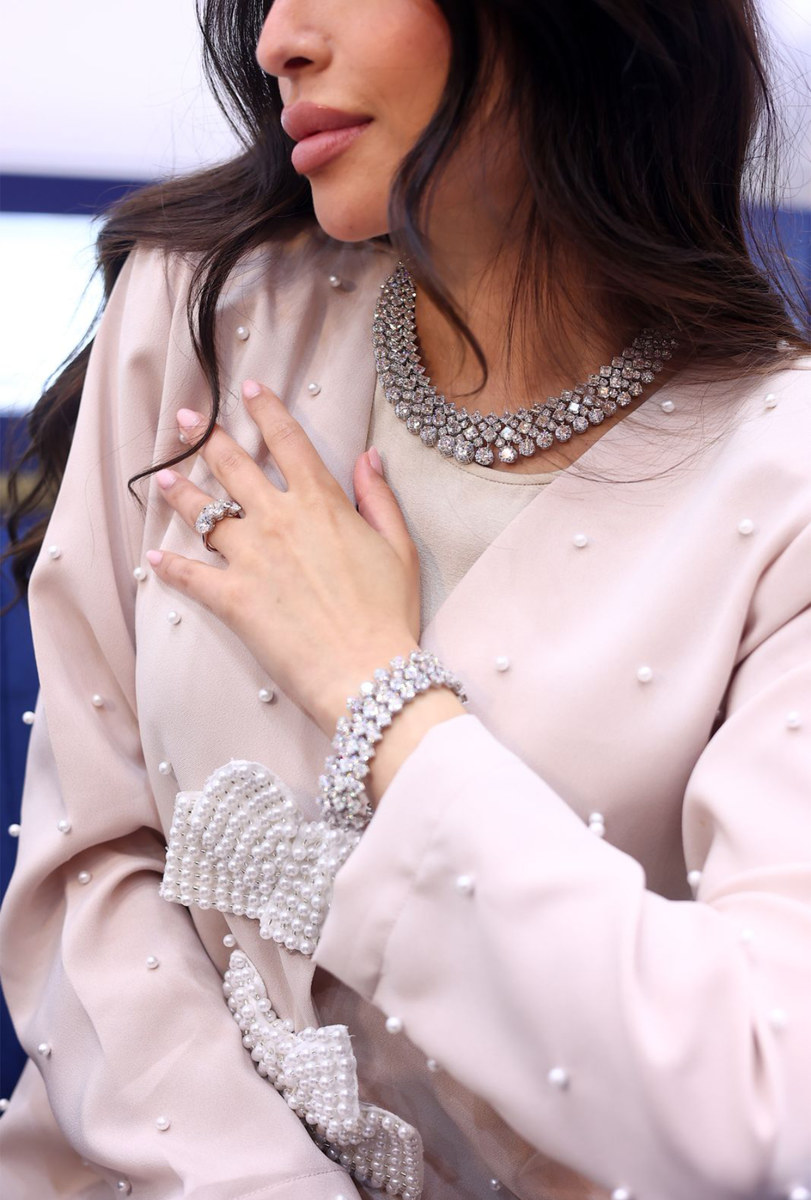
“My great-grandfather used to travel by boat,” said Maitarya. “This was before the Second World War and the discovery of oil. The oyster industry had declined and no longer produced these kinds of pearls. These are Saudi natural lulu pearls.”
He said that the pearls were no longer found in the Gulf, adding: “We collected them from grandmothers, maharajas, royal families, and other sources around the world.”
FerriFirenze, an Italian brand, is also impressing Saudi clients at the event.
Giulia Lina Callegari, owner of FerriFirenze, said: “We came to Saudi for the first time five years ago. We’ve seen the changes, the enthusiasm, the projects, and we’re always excited to meet local ladies who know jewelry, appreciate style, and often become our guests in Florence.”
FerriFirenze is a family business that began 10 years ago, and Callegari added: “We create jewelry that moves, physically moves when touched, is flexible, and so on. This style of jewelry can only be made by hand in Italy.”
Macklemore shares teaser for new song in support of Gazans

DUBAI: American rapper Macklemore is set to release a new song this week in support of Palestine.
Titled “Hind’s Hall,” the track honors Hind Rajab, the 6-year-old Palestinian girl who was killed by Israeli soldiers in Gaza while waiting to be rescued.
Drawing its inspiration from the global student protests, the singer released a teaser of the track on his Instagram feed and said that all proceeds from its sale would be donated to the UN agency for Palestinian refugees.
“The people, they won’t leave / What is threatening about divesting and wanting peace? / The problem isn’t the protests, it’s what they’re protesting / It goes against what our country is funding / Block the barricade until Palestine is free,” he sings.
“What you willing to risk? / What you willing to give? / What if you were in Gaza? / What if those were your kids? You’d want the world to stand up / And the students finally did.”
The full song has yet to be released on streaming platforms.
Gigi Hadid, Imaan Hammam turn heads at the Met Gala
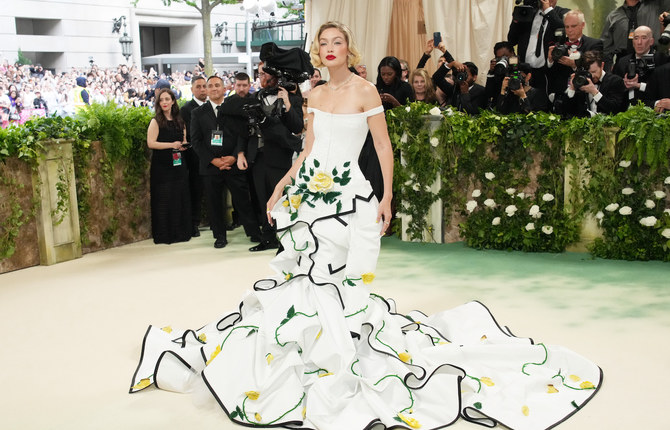
NEW YORK: A-listers at Monday’s Met Gala in New York included US Dutch Palestinian catwalk star Gigi Hadid, Dutch Moroccan Egyptian model Imaan Hammam, Jennifer Lopez, Zendaya and a parade of others dressed in a swirl of flora and fauna looks on a green-tinged carpet lined by live foliage.
Hadid brought the drama in a look by the drama king himself, Thom Browne. Her white gown was adorned with 2.8 million microbeads with yellow flowers and green thorns. She was high glam in a wavy bob and crimson lips.

Hammam donned a two-piece ensemble — her outfit featured a cape, drawing inspiration from Swarovski's Gema collection, and a satin column skirt adorned with gold crystals.
Crafting the cape was an intricate process spanning 14 days. The cape incorporated over 3,000 crystals in six cuts and five vibrant hues while the skirt boasted over 100,000 crystals.

Meanwhile, Lopez went for silver leaves in a second-skin gown by Schiaparelli and Zendaya was all vamp and fantasy in a rare double appearance on the steps of The Metropolitan Museum of Art.
Lopez went with Tiffany & Co. diamonds, including a stunning bird motif necklace with a diamond of over 20 carats at its center.

Zendaya put on her fashion face in peacock hues of blue and green, with a head piece to match and leaf accents. The look was Maison Margiela by John Gallliano. She walked again to close the carpet in black Givenchy Haute Couture gown also by Galliano with a head piece stuffed with flowers by Alexander McQueen.
Mindy Kaling is sure to make the best-dressed lists in sand-colored swirls that towered over her head at the back. Her look was by Indian couturier Gaurav Gupta.

Penelope Cruz, meanwhile, went goth in black by Chanel. It had a bustier top and a Sleeping Beauty-like off-shoulder silhouette. There was another Sleeping Beauty-ish guest: Kendall Jenner in a Givenchy look done by Alexander McQueen in 1999.
Kendall’s sister, Kylie Jenner, was in an Oscar de la Renta low-cut strapless look, a white bloom in her clicked-back updo and a train behind. Older sister Kim Kardashian tightly covered up her silver corset look with a leaf motif by Maison Margiela with a gray sweater.
Riyadh forum highlights importance of cultural identity and Arab heritage
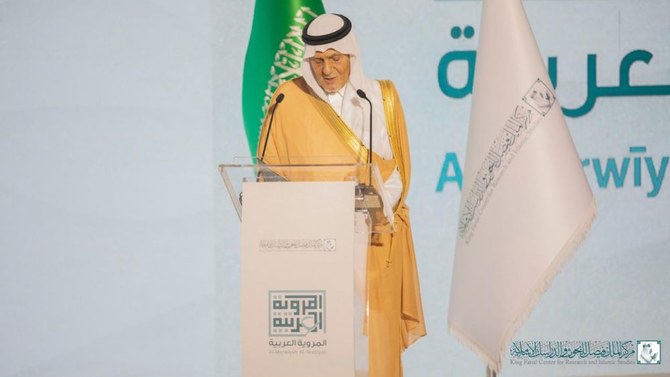
- Scholars, officials, experts explore and celebrate Arabian Peninsula
- Katakura Kunio said that both Japanese and Islamic cultures had historic roots in promoting peace
RIYADH: The Al-Marwiyah Al-Arabiyah Conference, called “Desert Culture,” concluded on Monday in Riyadh. The two-day event brought together a diverse group of scholars, officials, and experts to explore and celebrate the rich cultural heritage of the Arabian Peninsula.
Prince Turki Al-Faisal, the chairman of the King Faisal Center for Research and Islamic Studies, said that nomadism was central to Arab culture, emphasizing its roots in values over materialism. He noted that Arabs were natural storytellers, adept at turning chaos into clarity.
Katakura Kunio, president of the Motoko Katakura Foundation for Desert Culture in Japan, delivered a speech in memory of his late wife, anthropologist Motoko Katakura, which highlighted her research in Saudi Arabia.
Kunio said: “Motoko’s enduring passion for comfort inspired our foundation to establish the Comfort Prize, aimed at supporting both Japanese and international researchers and artists. This award honors individuals who dedicate their lives to enriching desert culture.
“In the current climate of positive change within Saudi Arabia, including the increased societal participation of women and the focus on tourism development, it is natural to re-evaluate the traditional value of comfort. Perhaps, in a world increasingly driven by hyper-capitalism, comfort can offer a remedy for the global population yearning for a slower pace.”
Kunio said that both Japanese and Islamic cultures had historic roots in promoting peace. He noted that Prince Shotoku of Japan endorsed “respect for peace” in his 17-Article Constitution, while the Prophet Muhammad established the Madinah Charter, which also emphasized peace and tolerance. These parallels suggested a common ground for fostering cross-cultural understanding, he added.
Abdullah Hamidaddin, assistant secretary-general for scientific affairs at the KFCRIS, described Al–Marwiyah Al-Arabiyah as a research initiative which aimed to address confusion about Arab civilization. It sought to combat attempts to undermine and marginalize Arab culture.
Hamidaddin said that the project used scientific methods to study Arab narratives and the origin of language in the Arabian Peninsula, while promoting dialogues, field studies, and critical analyses in various fields, including history, archaeology, sociology, philosophy, literature, and art.
The conference aimed to highlight the civilizational and cultural significance of the Arabian Peninsula, while seeking to strengthen the sense of Arab identity for future generations. It also promoted cultural exchange between the Arab world and neighboring regions.
A lecture titled “Gifts of God (Camels),” by Sulaiman Al-Theeb, cultural adviser at the center, was presented during the conference.
He spoke of the Arabian Peninsula’s deep connection with camels through three key concepts: rock and mural art; archaeological finds, like daily tools; and references to camels in ancient Arabic inscriptions, especially Thamudic writings.
Al-Theeb highlighted the significant status of camels in the region, which has earned them the moniker “the ship of the desert.”
Mohammed Al-Rowaily, a member of the Cultural Council at the Abdulrahman Al-Sudairy Cultural Center, said that the Arabic narrative played a crucial role in sharing ideas with others. He noted that Arabic storytelling enhanced cross-cultural understanding by conveying elements from history, oral literature, civilization, arts, and other creative works.
Hajar Al-Shammari, a linguistic researcher in Saudi history, said that the event boosted cultural engagement by fostering dialogue and cultural exchange among academics. Through the sharing of ideas it helped to establish a foundation for field studies and critical analyses focused on Arab perceptions and identity.
Al-Shammari added that Arabic storytelling played a significant role in promoting social cohesion, fulfilling the search for roots, and reinforcing values. This was especially important in the context of cultural identity and Arab heritage.
Bella Hadid celebrates fragrance launch in New York

DUBAI: American-Dutch-Palestinian model Bella Hadid celebrated the launch of her new fragrance brand, Orebella, at a party held over the weekend at The Huntress New York.
In typical Hadid fashion, she turned heads in an archival Roberto Cavalli look from the label’s Spring/Summer 2003 collection, consisting of a petite yellow gown, matching lace-up corset, and gold stiletto sandals.
The runway sensation turned to Instagram last week to showcase images of her fragrances, which are named “Salted Muse,” “Blooming Fire” and “Window2Soul.”
Crafted from glass and adorned with gold caps, the bottles are offered in 10, 50 and 100 ml.
Hadid in her caption described the fragrances as “hydrating, alcohol-free and enriched with essential oils.” She urged her followers to “shake to activate the transformative bi-phase formula.”
The “Salted Muse” perfume has “top notes” of sea salt, pink pepper and carbon dioxide extract, “heart notes” of olive tree accord, fig and lavender, and “base notes” of cedarwood, sandalwood and amber, according to reports.
The “Blooming Fire” fragrance has bergamot, cedarwood, clove leaf and cardamom, followed by Tahitian monoi and jasmine, and finishes with patchouli.
The “Window2Soul” scent has a blend of lemon, geranium and mint in its top notes, transitions to jasmine and damask rose, and concludes with a base of tonka bean.
Hadid wrote on her website: “For me, fragrance has always been at the center of my life — helping me feel in charge of who I am and my surroundings,” she said. “From my home to nostalgic memories, to my own energy and connection with others, scent has been an outlet for me. It made me feel safe in my own world.”
“Through my healing journey, I found that I was extremely sensitive to the alcohol in traditional perfumes — both physically and mentally — it became something that was more overwhelming than calming to me,” she added. “That is the main reason I wanted to find an alternative, so essential oils became an artistic and experimental process for me.”
While Hadid’s New York trip has primarily been spent promoting Orebella, she is expected to attend the Met Gala in a few days.



